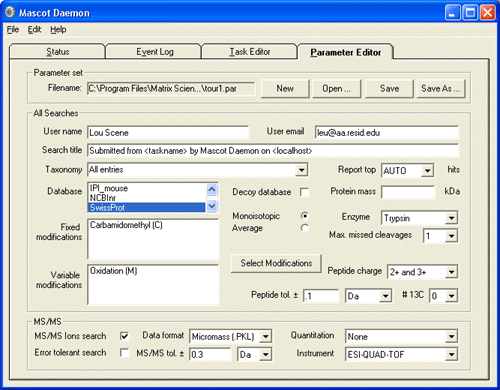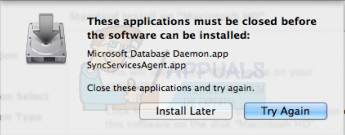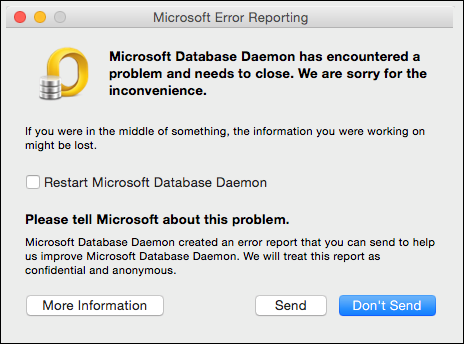BSD Daemon: The BSD daemon is an IT term for a kind of conceptual mascot for variations of the open source UNIX operating system classed as Berkeley Software Distribution or BSD designs. This icon and symbol of Berkeley Software Distribution programs is nicknamed Beastie, and has been depicted by graphic artists. The copyright for the BSD. The daemon is the networking program which is responsible for performing a maintenance utility function. It works in a background & is activated automatically. So, to access database, the Microsoft Database Daemon is used all the time. Hence, due to the corruption of database, you may get ‘Microsoft database daemon error outlook 2011 Mac. EDIT: Here is how to get it to work for a Web-App: Get your Client ID and Key from the Configure page for the web app (You need to select a duration for the key and then click save for it to be generated) Change the authentication code in the app to look like this: private static AuthenticationResult GetAccessTokenForWebApp. /Documents/Microsoft User Data/Office 2011 Identities/Main Identity/Data Records If you're not careful and don't quit the Microsoft Database Daemon, it could still be trying to reference the old DB, wherever you may have left it. Use Activity Monitor to look for and quit the Microsoft Database Daemon and re-do the procedure. Thank you Peter. I was a doubter, because I thought the daemon,’a housekeeping or maintenance utility’ (microsoft definition) was separate from the database it ‘managed’. In any casewhen I verified the database, it was OK. What would rebuilding it achieve? I nearly gave up. In despair I rebuilt the database, just as you advised.
System Requirements
Mascot Daemon 2.7 requires:
- Windows Vista SP2 or Windows Server 2008 SP2 or later
- .NET framework 4.6
- If Mascot Distiller is used as data import filter, it must be version 2.6 or later
64-bit versions of Windows are fully supported. Mascot Daemon communicates with the Mascot Server using HTTP or HTTPS over TCP/IP, even when installed on the same PC as Mascot Server.
Note: If you have multiple Mascot Server systems with different versions, Mascot Daemon 2.7 can be used to submit searches to Mascot Server 2.1 and later. In exceptional circumstances, it can also be used with Mascot Server 2.0, but this requires the Mascot Server to be updated by downloading file updates from the Mascot support page.
Getting Help

Once Mascot Daemon is installed, refer to its on-line help fordetailed information on configuration and use. The on-line helpis context sensitive, so you can jump to a relevant page at any time bypressing F1.
Installing Mascot Daemon
If upgrading from an earlier version of Mascot Daemon, switch to the Upgrading topic.
1. Using a web browser, verify that it is possible to connect to your Mascot server from the PC on which Mascot Daemon is to be installed. If there are any problems submitting a search from a web browser and retrieving the result report, these must be resolved before installing Mascot Daemon.
2. Mascot Daemon requires .NET framework 4.6 or later. This is standard on Windows 10 and Server 2016, and it may already have been installed on earlier versions of Windows by some other application. If you are not sure whether it is present, just run Mascot Daemon setup. If it reports that .NET 4.6 is missing, download and install it from the following location:
- Microsoft .NET Framework 4.6
3. Run Mascot Daemon setup. The same installer handles both 32-bit and 64-bit platforms.
4. After installation, when you first run Mascot Daemon, the Preferences dialog will be displayed. You must configure a connection to your in-house Mascot Server before you can proceed. On the Intranet tab, enter your in-house Mascot server URL, up to and including the cgi directory, e.g. http://your_server/mascot/cgi/. If the web server or a proxy server requires authentication by user name and password, enter your credentials on the Authentication tab.
If you have Mascot security enabled, you need to ensure Daemon can log into your Mascot Server as a user with the rights to submit searches from Daemon. Usually, this means being a member of the power users or daemons groups. If necessary, ask your Mascot system administrator for a user name and password, and enter these into the appropriate fields on the authentication tab of Daemon preferences.
5. By default, the task database uses an embedded engine called VistaDB, which is pre-configured and requires no additional components to be installed. If you want to share a single task database between multiple instances of Daemon running on different PCs, you should chooseone of the server-based, high-performance database engines, (Microsoft SQL Server, MySQL, Oracle, PostgreSQL). For detailed guidance on the installation of database engines and ODBC drivers, press F1 and refer to the Daemon on-line help: Getting started; Database engines.
6. Choose Save and Mascot Daemon will exit. When re-started, the desktop interface will be displayed and the Mascot Daemon engine will run in the system tray. This is the preferred arrangement in all cases except when you want to run multiple instances of Daemon in separate remote desktop sessions on the same PC, which requires the engine to be configured as a Windows service. For details, press F1 and refer to the Daemon on-line help.
7. The quickest way to familiarise yourself with Mascot Daemon is to follow through the short tutorial in the on-line help.
Upgrading Mascot Daemon
If this is a clean installation of Mascot Daemon, switch to the Installing topic.
1. Mascot Daemon requires .NET framework 4.6 or later. This is standard on Windows 10 and Server 2016, and it may already have been installed on earlier versions of Windows by some other application. If you are not sure whether it is present, just run Mascot Daemon setup. If it reports that .NET 4.6 is missing, download and install it from the following location:
- Microsoft .NET Framework 4.6
2. Run Mascot Daemon setup. The same installer handles both 32-bit and 64-bit platforms. If Mascot Daemon 2.4 or earlier is installed, setup will automatically stop the Mascot Daemon Windows service, delete it, then ask you to uninstall the old Mascot Daemon using the Windows control panel. In which case:
- From the Windows Start menu, select Settings.
- Select Control Panel
- Double-click Add/Remove Programs or Programs and features
- From the applications list, select Mascot Daemon and choose Change/Remove or Uninstall
- Run Mascot Daemon 2.7 setup once again
Note: If you want to keep your old task database, and it is the default Microsoft Access file (TaskDB.mdb in the application directory) make a copy of it in a safe place before uninstalling the earlier version of Mascot Daemon.

3. When you first run Mascot Daemon, if the previous version was 2.4 or earlier, the Preferences dialog will be displayed. You must configure a connection to your in-house Mascot Server before you can proceed. On the Intranet tab, enter your in-house Mascot server URL, up to and including the cgi directory, e.g. http://your_server/mascot/cgi/. If the web server or a proxy server requires authentication by user name and password, or if Mascot security is enabled,enter the relevant credentials on the Authentication tab.
4. By default, the task database uses an embedded engine called VistaDB, which is pre-configured and requires no additional components to be installed.
Option 1: If you were using Microsoft Access, and wish to stay with it, choose Preferences from the Edit menu, go to the ODBC Connection tab, and select Microsoft Access. The default path to the database file is C:ProgramDataMatrix ScienceMascot DaemonTaskDB.mdb. Either copy your old database file to this location, over-writing the empty database file, or change the path to point to your preferred location.
Option 2: To share a single task database between multiple instances of Daemon running on different PCs, choose whichever high-performance database engine you prefer: Microsoft SQL Server, MySQL, Oracle, PostgreSQL. These database engines may be running on a different computer, accessed over the LAN. Note that someone with database administrator rights must create an empty database before it can be used by Mascot Daemon. For detailed guidance on the installation of database engines and ODBC drivers, press F1 and refer to the Daemon on-line help: Getting started; Database engines.
Option 3: If the task database will not be shared, the default VistaDB engine is recommended.
Note: To migrate the contents of your existing Access database to a new database engine, refer to the Daemon on-line help: Getting started; Database engines; Access; Migrating to other database engines..
Note: C:ProgramData is hidden by default. If it is not visible, you will have to type it into Windows Explorer before you can browse to lower directories.
5. If you have to install or update an ODBC driver for your chosen database engine, refer to the help topics for the individual database engines. Details can be found in the on-line help topics for the individual database engines.
Note: Windows 32-bit and 64-bit ODBC components are totally independent. That is, a 64-bit application cannot use a 32-bit ODBC driver and vice versa. On a clean 64-bit Windows installation, the only driver will be for SQL Server, and this may be a very old one.
What Is Microsoft Daemon

6. If you connect to a task database from an earlier version of Mascot Daemon, you will be warned that it will be updated. You might wish to make a backup of the file or tables in case of problems. Once the database has been updated, the Mascot Daemon desktop interface will be displayed, and the Mascot Daemon engine will run in the system tray. This is the preferred arrangement in all cases except when you want to run multiple instances of Daemon in separate remote desktop sessions on the same PC, which requires the engine to be configured as a Windows service. For details, press F1 and refer to the Daemon on-line help



